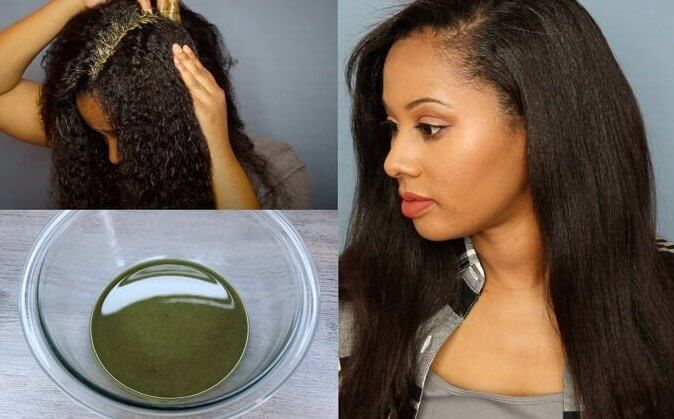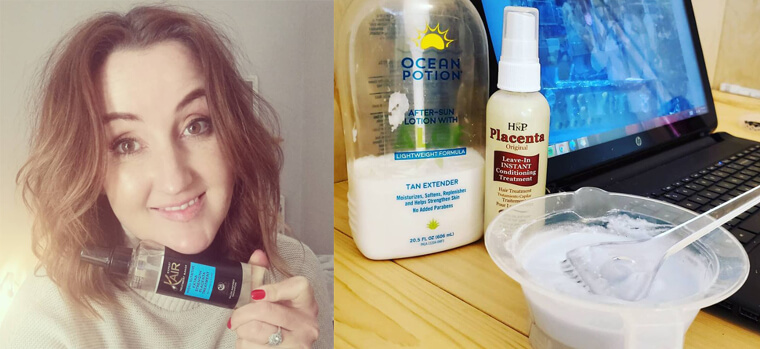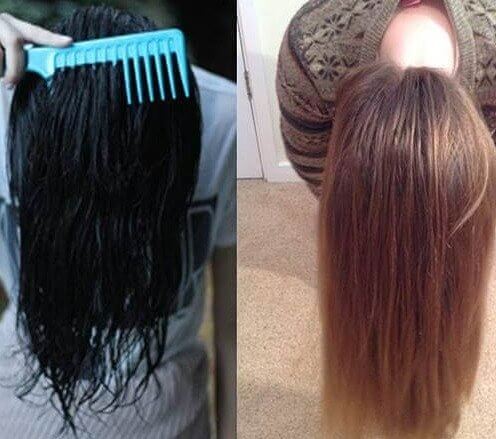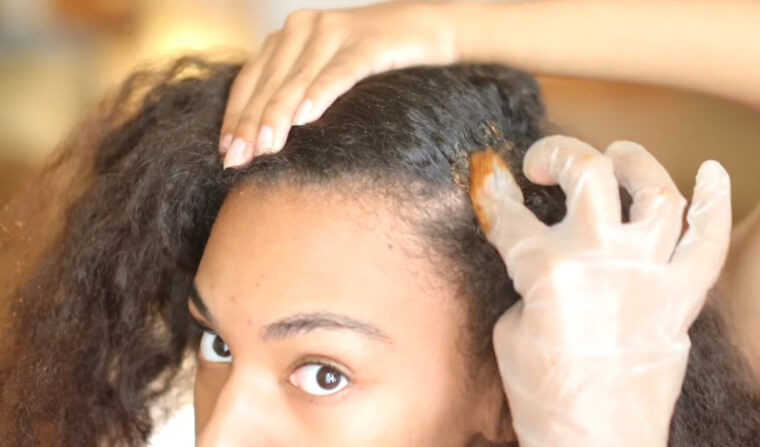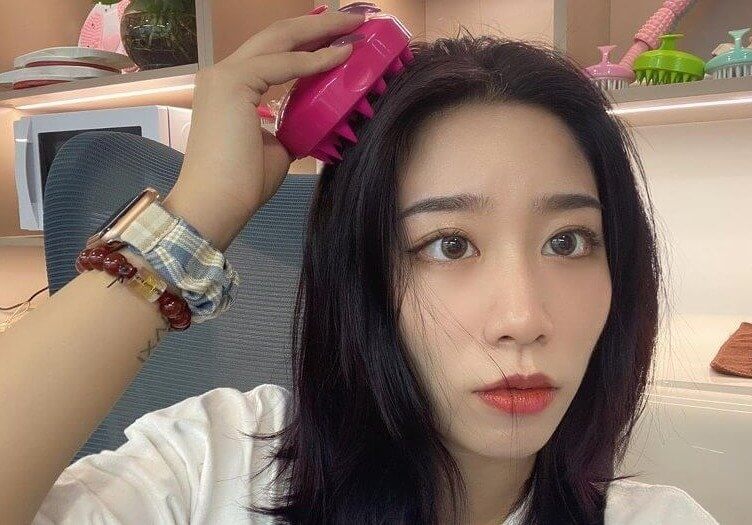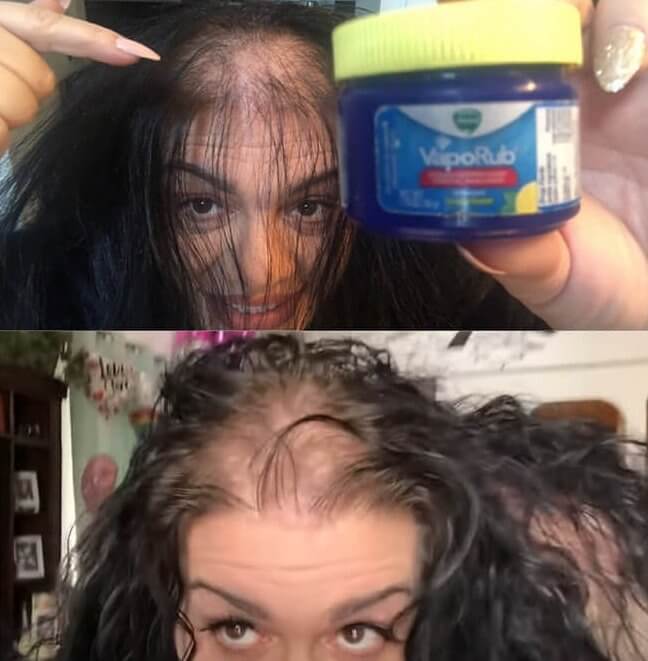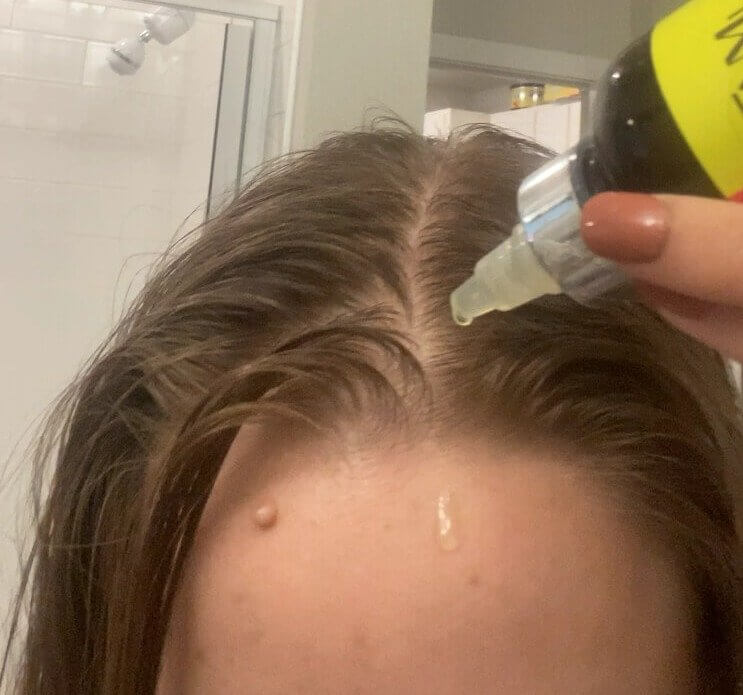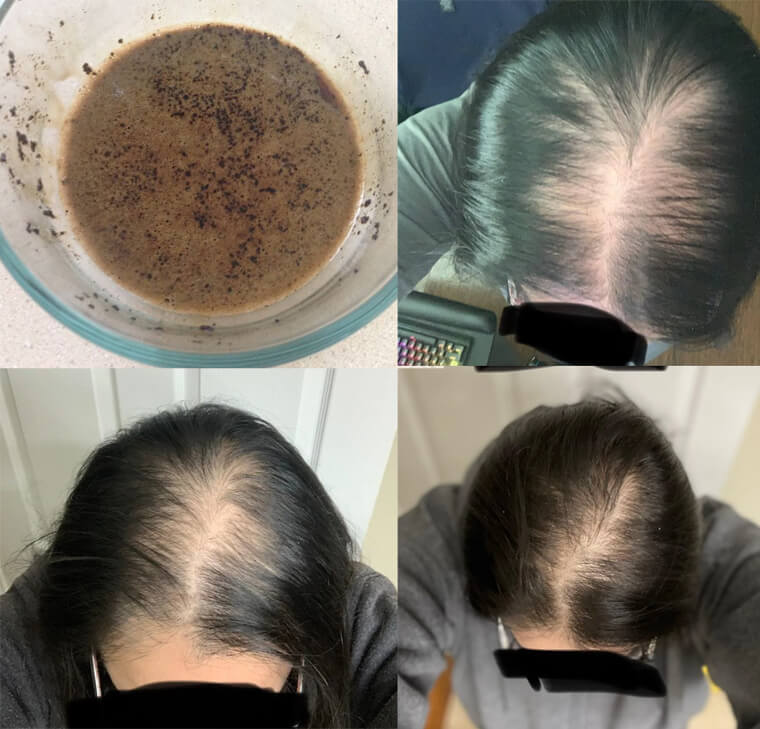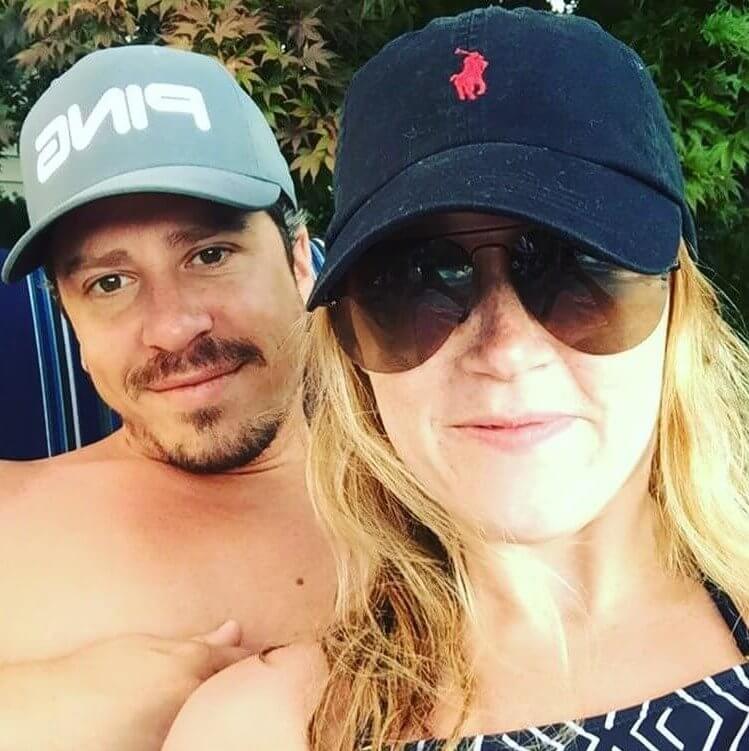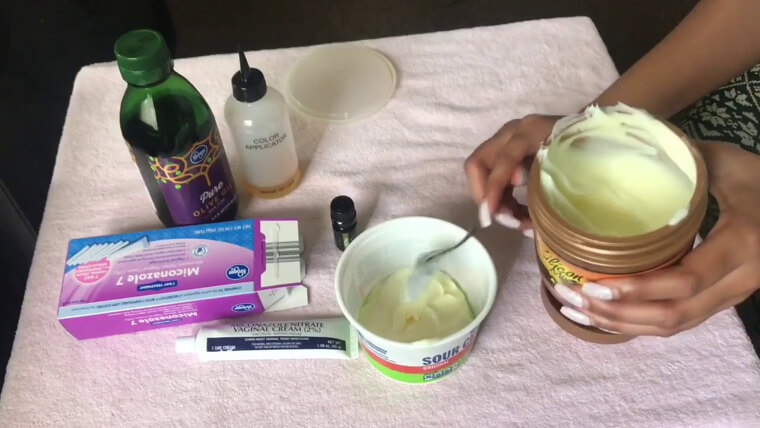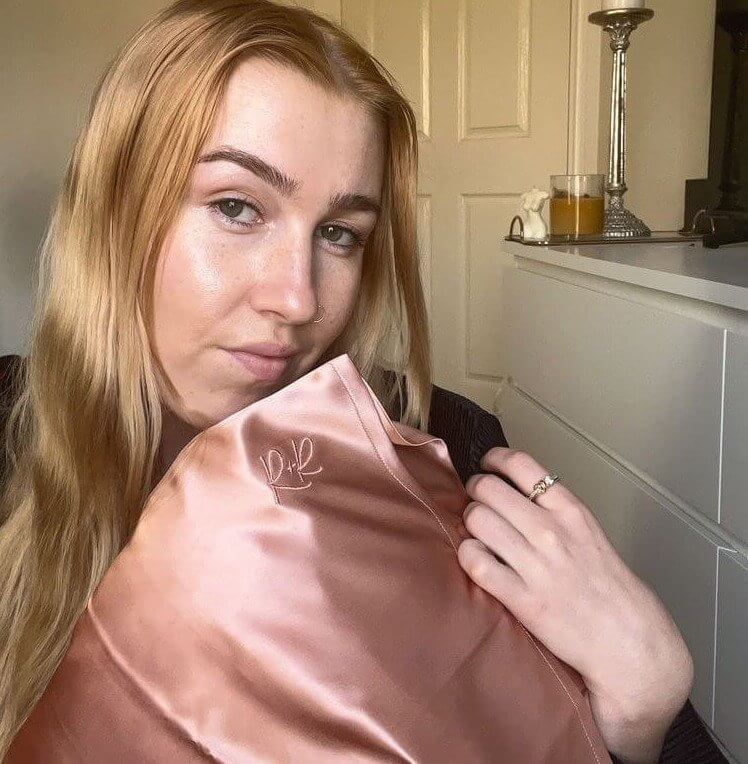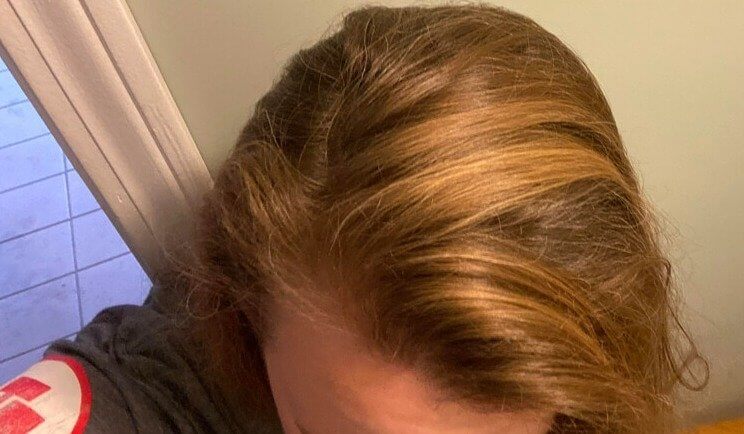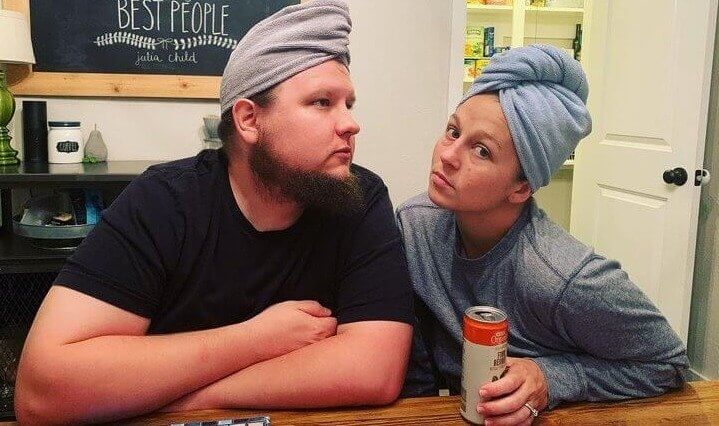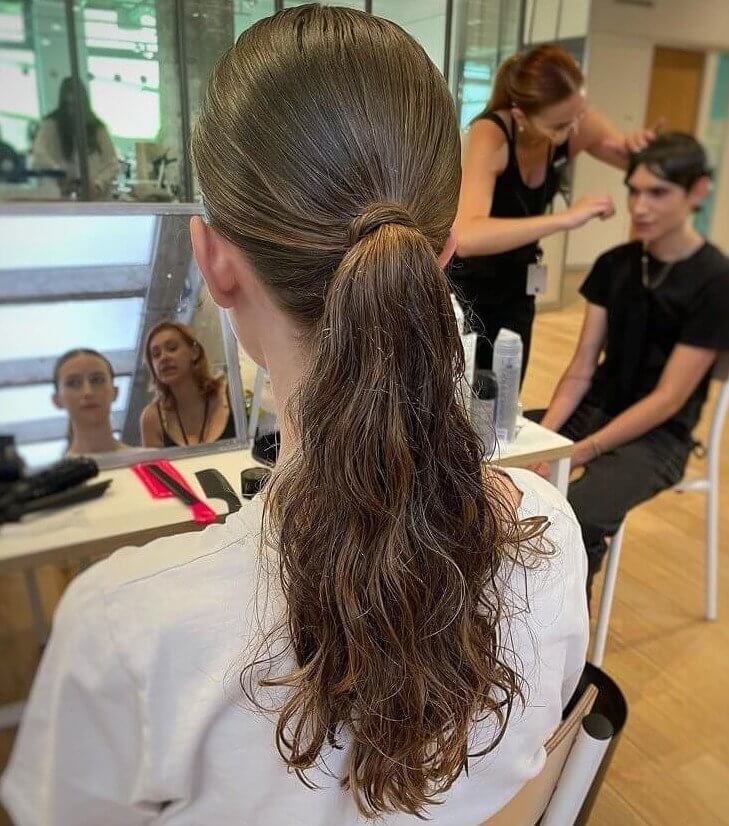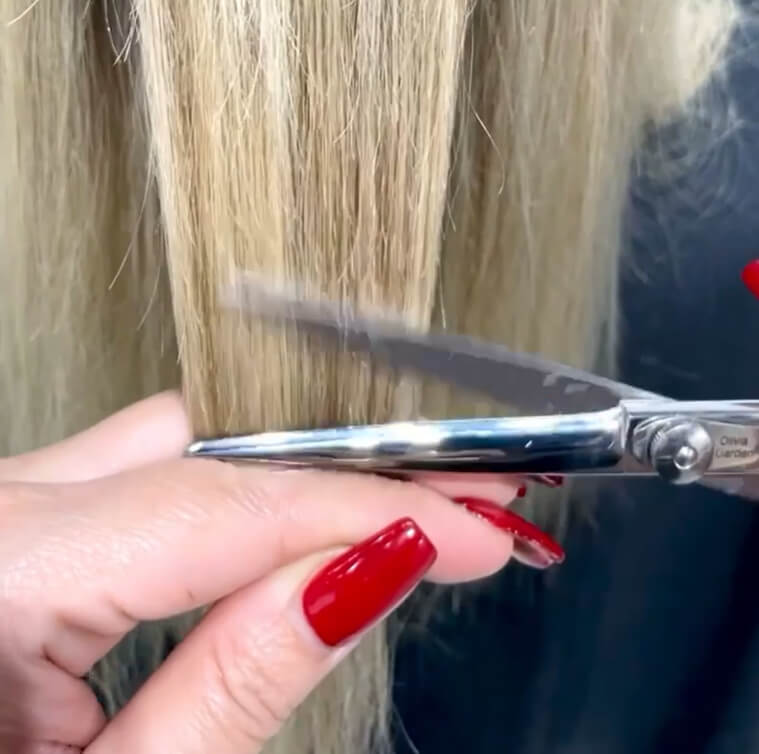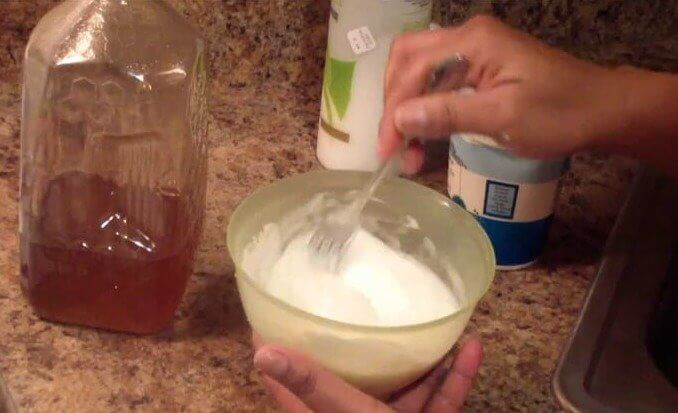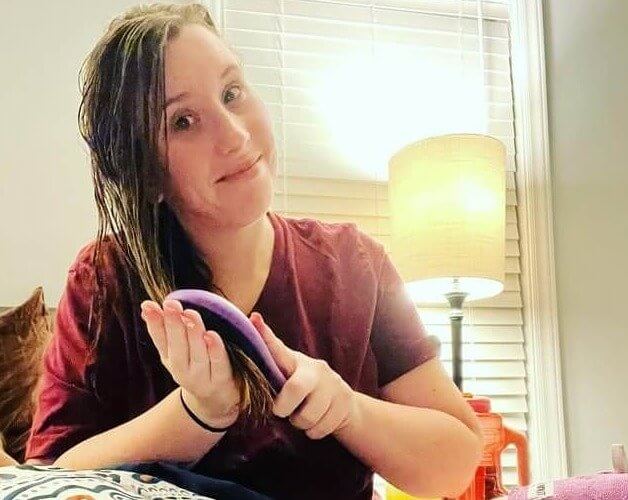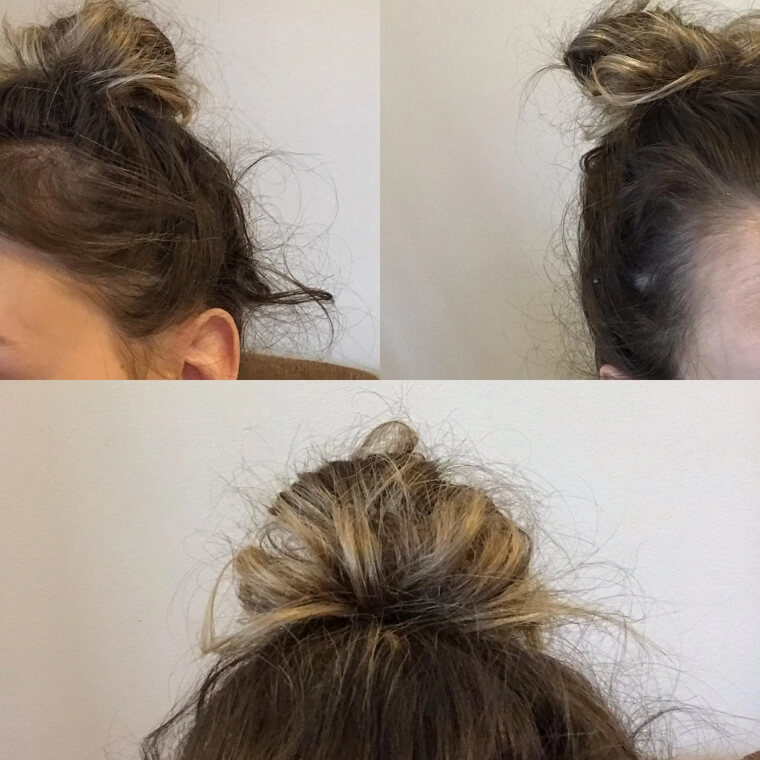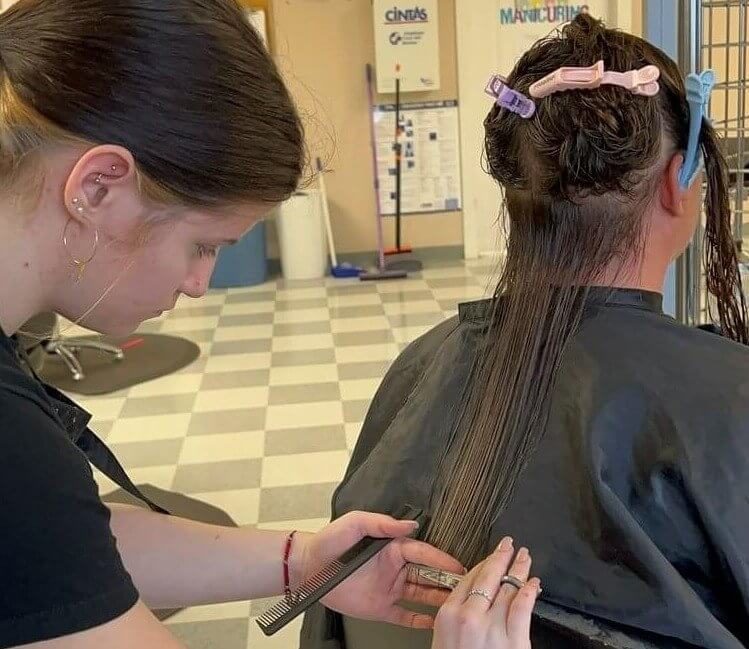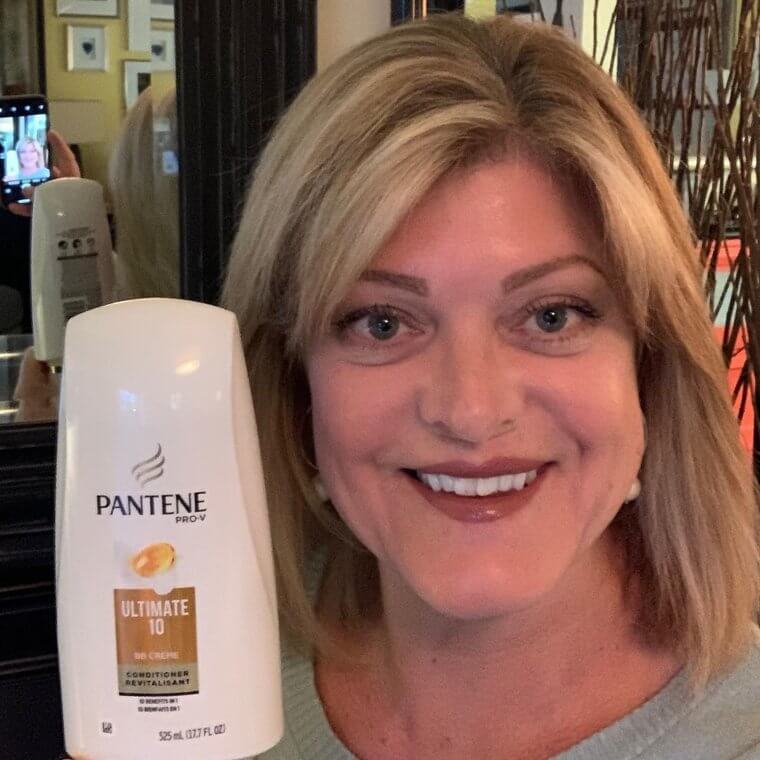The Benefits of Green Tea
Green tea is the hair cure nobody knew they needed! The antioxidant tea, renowned for its many health benefits, including lowering the risk of heart disease and fat loss, is now also being touted as an incredible hack to prevent hair loss and also strengthen and fortify our hair. Green tea is essentially an antioxidant, so when applied to our hair and scalp, it can leave it feeling refreshed and actually has removed bacteria and germs from our roots.
Among other nutrients, green tea contains high levels of water-soluble Vitamin B or biotin, which has been extolled for its hair loss-fighting properties.
Did You Know Your Hair Is Filled With Toxic Metals? Here's What to Do About It
Little did we know, but metal - yes, actual metal - accumulates in our hair over years and years of washing with tap water. When our over-metalized hair has a close encounter with oxidants i.e. when we color or bleach our hair, a negative chemical reaction occurs, leaving our hair damaged, fragile and broken. One of the newest hair hacks out there for soft, healthy, beautiful hair is a metal detox - products that contain an element which neutralizes metals!
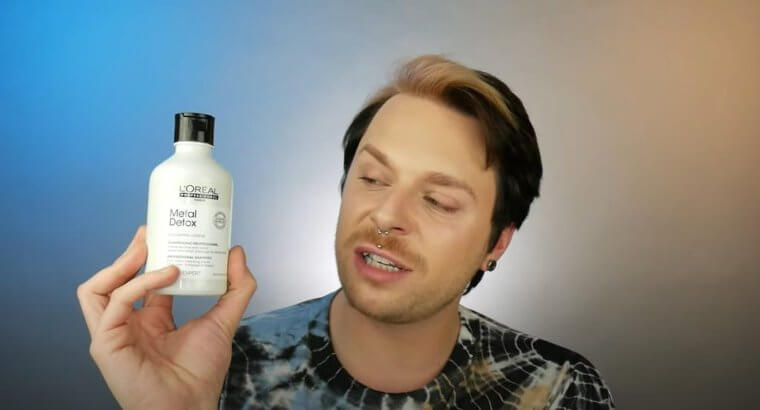
Of all the metals that are bad for our hair, copper is the ultimate villain, causing all kinds of havoc with our hair. To prevent further hair loss or breakage and to give your hair a new lease of life, try the metal detox hack everyone is raving about.
Placenta for Renewing Hair Growth
Yes, human placenta is being touted as the newest 'hack' when it comes to hair growth and renewal. Using placenta feels like a big leap from slapping on mayonnaise, but incredibly, scientific studies have shown that human placenta may be useful for treating chemotherapy-induced alopecia. The results are fascinating - using human placenta actually stimulated new hair growth! There are also hair products on the market now that include placenta, albeit animal placenta and not human.
What is it about placenta? Scientists say placenta extract accelerates cell division and growth factor expression, and that when used in a product, placenta extract acts as an emollient - making hair softer and more moisturized. A win!
Hang Your Head Upside Down to Get Blood Circulation Flowing
This tip is the most basic - blood flow! The basic act of turning one's head upside down increases blood flow and improves circulation to our hair follicles, encouraging hair growth. The newest hair hack, often called the Inversion Method, hasn't been proven - or disproven! - by scientific research yet, but Internet users are testifying that it works. In order to try it out, a person should lie down on their back with their head hanging over the side of a bed or couch and then massage some hair-friendly oil into the scalp while hanging out.
The Inversion Method is not encouraging anyone to hang themselves upside down for long periods of time - at most a few minutes a day, and just the head!
Cayenne Pepper - Not Just for Seasoning
One might think this is just another hot spice on the rack, but no! Traditionally used throughout centuries in herbal medicine for healing, cayenne pepper has recently raised its' spicy profile in the world of hair loss prevention and hair growth. Cayenne pepper, or more specifically the capsaicin in the pepper plant, has been used in experimental treatments in Japan. They began testing Cayenne pepper on those with alopecia and concluded that the treatments were affecting hair growth.
Next time you're making tacos, save some of that cayenne pepper for preparing a hair mask or oil!
Give Yourself Daily Scalp Massages
Little did we know, but there are huge benefits to scalp massages! Using the fingertips - not the nails! - and starting at the base of the neck, gradually moving up to different sections with the fingertips. Massaging should happen in an upward motion for around 5 minutes every time. There are a ton of 'scalp massage' devices out there, but our fingertips are actually the most effective for encouraging better circulation and healthy hair growth!
Scalp massages can definitely be done while showering - there's nothing like some multi-tasking to save you time on your hair routine.
Vicks VapoRub Treatment Shows Progress Within Just Six Weeks
Many, many wacky and weird things have been tried out - and used! - in the name of beauty, and this one is no different. Vicks VapoRub is more commonly known for relieving chesty coughs or muscle aches, but women all over the Internet are trying Vicks out on their edges and hairlines and seeing significant change and growth, some in as little as five weeks. Apparently, the main Vicks ingredients - menthol, eucalyptus, and camphor - are a holy grail mixture for hair growth and stimulation for some types of hair.
We love this idea for its simplicity - Vicks VapoRub is cheap and easily found at all drugstores, so it's available to anybody who wants to try out this trendy hair hack!
Follow the Golden Rules of Blow-Drying to Prevent Hair Loss
When it comes to hair hacks for preventing hair loss, one of the biggest factors in haircare comes into focus: heat. It's responsible for the largest amount of damage done to our hair, but drying with a blow-dryer or irons often helps our hair 'look' its best. Some golden rules when it comes to blow-drying hair include never using it on soaking wet hair, always using a heat protective spray or serum, and while some recommend removing the nozzle of a blow-dryer, other professionals say it's enough to hold it 1-2 inches away.
More golden rules include: sectioning off hair to blow dry, using the right blow-dryer for specific types of hair, and using the right brush to blow dry with.
Women Swear by These Oils That Promote Hair Growth
The pleasure of a massage cannot be overstated, particularly when it comes to anywhere in the head, scalp, and neck region! It's incredibly relaxing, and it turns out there are also major health benefits, as well as hair health benefits, to a scalp massage. Particularly when massaged with certain hair-friendly oils, scalp massage can contribute to hair growth. A massage stimulates blood circulation, which is always a positive thing when it comes to our bodies.
Some of the recommended oils for making a homemade hair and scalp massage oil are lavender, coconut, and jojoba. Apply a few drops to the scalp, and then massage in gently with the fingertips. Bliss.
Natural Caffeine Shampoo Can Be as Effective as Prescribed Medicated Treatments
A cup of java in the morning might be exactly what is needed to get the body up and awake - and the same may go for our hair! Beyond regular coffee, caffeine is also found in tea, matcha, and chocolate and might also be the key to combating hair loss. Caffeine is known to stimulate our nervous systems and circulation, and increased blood flow is key to improving hair growth. What's most interesting about the connection between hair and caffeine is the recommendation to apply the caffeine topically to hair and scalp for best results.
In a scientific study on hair loss and growth in 2017, scientists found that 'natural' caffeine shampoo and prescribed medicated treatments for male alopecia produced almost exactly the same results!
Avoiding Sun Damage Is Crucial
When talking about hair loss, exposure to the sun doesn't immediately spring to mind - but it is, in fact, one of the biggest causes of damage to our hair. Sun exposure breaks down the natural lipids (fats) in our hair, leaving it unable to really retain moisture and leading it to become frizzy and dry. The sun can also gradually alter the color of our hair, so in order to protect those gorgeous lowlights, professionals recommend always wearing a hat in the sun.
Experts also recommend minimizing exposure to the sun at peak times and applying SPF to the scalp.
Antifungal Monistat 7 Is Not Just for Yeast Infections (yes, Really)
One of the oddest hair hacks out there for preventing hair loss, beyond mayonnaise and VapoRub, is the use of Monistat 7 - a cream traditionally used for yeast infections. Yes, you read that right. The science part goes like this: the active ingredient in Monistat 7 is miconazole nitrate, normally used to treat fungal infections. As microbes and fungi do actually live on our scalp, using this topical treatment - mixed with olive oil - might not be as 'out there' as people think.
However, be warned that there's still no clinical proof that Monistat 7 actually works when it comes to hair growth! But many people on the internet swear it's worked for them.
Why so Many People Are Changing to Silk or Satin Pillowcases
There are many factors that lead to hair loss or shedding, but one of the things we can easily change is what our hair is doing while we're sleeping. Yes, sleeping! Pillowcase fabric has proven to be a factor when it comes to shedding. Changing up a cotton pillowcase for satin or silk allows for better circulation and maintaining moisture in the hair, i.e., no frizzy, brittle, or dried-out hair in the morning. Cotton absorbs oils from our hair and skin, but other fabrics just let them be!
If every morning you face a mane of frizzy, dry, or tangled hair, then definitely consider taking this hack more seriously!
Baking Soda Can Do Wonders for Your Scalp
Raid the pantry and baking supplies for this hack - baking soda has proved to be effective at removing buildup on the scalp, thanks to its high pH! Most commonly, proponents of the baking soda hack use it as a paste, made with water and essential oils, that is brushed onto the scalp. They also use it in conjunction with vinegar which has some antifungal properties and might be a natural treatment for dandruff.
If tempted to try this baking soda hack or a baking soda and vinegar routine, always check if it's suitable for your particular hair type first!
Here's Why You Should Say No to Towel Drying
As we've learned, wet hair is far more easily broken than dry. This is why when our hair is wet, we need to be incredibly careful as to how we take care of it. Vigorously rubbing hair with a regular towel, for example, can lead to disastrous results for hair, which is so fragile when wet. The easiest and cheapest hack on this list is this one: stop towel drying! A better method would be to pat sections of hair dry rather than rub or wrap.
Even better would be air drying, the best of all methods - no interference with our fragile hair, and don't be afraid to pat a little light product on so curls or strands will dry without the frizz.
Never Do This to Your Hair After Exercising
The endorphins are pumping, it's been an awesome early morning yoga or cardio session, and the whole day lies ahead - but wait, what to do about our sweaty, sticky hair? Leave it and carry on to the office? Shower and get to work late? Skin doctors are unanimous in their agreement that a build-up of oils in hair follicles can have negative consequences, from smelly or greasy hair to scalp acne and fungal dermatitis.
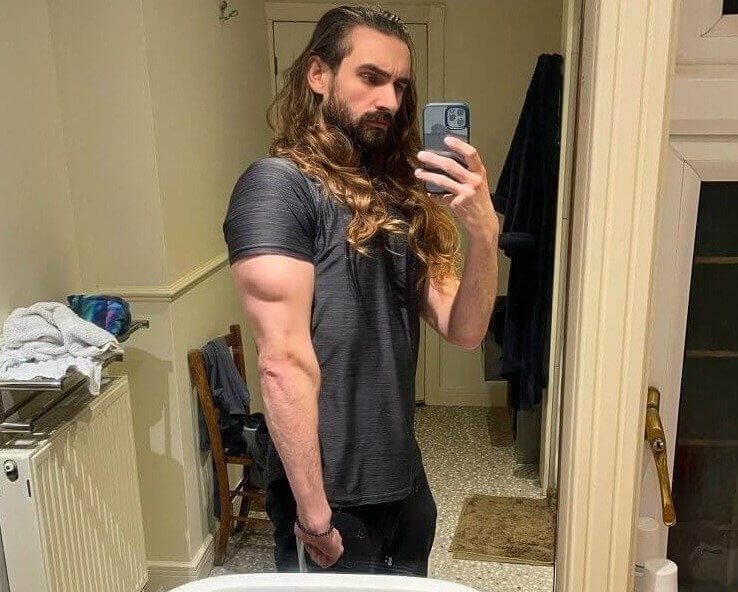
Luckily, this does not mean a full wash is due after every workout. Doctors and hairstylists recommend that, at the very least, even just a rinse with apple cider vinegar or specialized 'post workout' shampoo can help with sweaty, post-workout hair and scalp. Tying your hair up or braiding for a workout also helps!
Peanut Butter Hair Culture
This pantry staple and spread is not only for sandwiches! This user-recommended hair hack involves spreading a small amount of PB on dry or broken ends, leaving hair soft and easy to detangle. In fact, those with especially tangly hair swear by creamy peanut butter as a softener. It might be because it's chock full of oil and other fats, as well as vitamin E which can be helpful for dry or split hair.
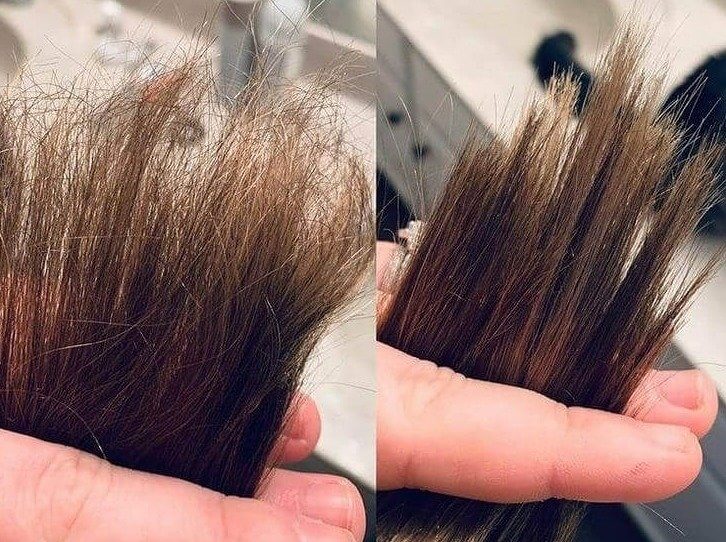
Remember: it's thick and oily and will take a couple of thorough washes before the peanut butter is fully rinsed out, and there's a possibility of smelling like roasted peanuts for a few days after. On second thought, that might not be a downside at all!
How Often - And How Exactly - Should You Clean Your Hairbrush?
If there's one crucial thing we've learned from these hair hacks so far, it's how important scalp health is. Brushes can become weighed down with dust, oil, and product residue, as well as dead hair. Keeping all hair tools, including brushes, clean should be a regular part of our haircare routine - in other words, clean that hairbrush more often! Cleaning brushes is not simply a case of removing excess hair; it means actually washing them.
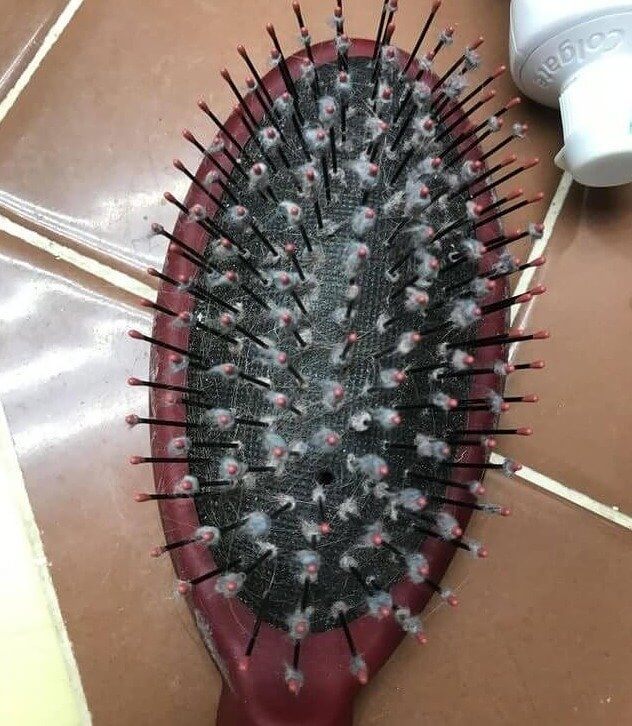
Experts recommend soaking brushes in hot water with baking soda and clarifying shampoo for around 30 minutes, then rinse and pat dry.
The One Thing You Should Never Do With Wet Hair
The one area all professional hair stylists seem to agree on when it comes to hair loss is that wet hair gets treated very, very badly -and, as a result, leads to hair loss. As our hair morphs from wet to dry, its elasticity changes. While it's wet, elasticity is at the maximum - so pulling it and tying hair back when it's wet means hair is much more likely to break!
As well as avoiding brushing our hair when wet, other bad hair habits include rubbing vigorously with a towel, slapping on a lot of product when soaking wet, using hot tools before the hair is actually dry, and tying it back when still wet - all should be avoided.
Hair Stylists Reveal the Secret Powers of "Hair Dusting"
What is hair dusting? We can confirm it has nothing to do with powder, fairy dust, or dry shampoo. Rather, it's a method for cutting hair employed by hair stylists when they want to maintain hair length but do away with dry split ends. Like a little trim but without the dramatic effect of a full 'haircut,' dusting is when a stylist will take a section of hair, twist it tightly, and, using shears, snip off anything or bits sticking out.
Hair dusting is the perfect way to keep hair trim and healthy-looking without losing length or having to go full-on, will-regret-this-tomorrow, dramatic haircut.
Hair Accessories Are a No-No
According to the hair experts, none of it is doing our locks any good, whether it's clips, ties, ribbons, snaps, bobby pins, or glitter-rainbow hair extensions. Some of the worst culprits include metal tiara or diamante clips with teeth, hairbands, elastics or ties made of material that snags on our hair, and headbands that strain the scalp. Sew-in braids and wigs cause a lot of pulling and stress on the scalp, leading directly to thinning and breakage.
Can't get enough of hair accessories but are worried about damage? Go for a scrunchie! They're back in style, plus all the extra material on a scrunchie provides layers of protection for your hair. The perfect solution.
Swap Your Plastic Comb for a Wooden One
This is a high-priority hair hack if we ever saw one - it's time to get rid of the plastic comb! Small plastic combs are not gentle on our hair shafts. When run through hair, they cause friction and static, creating frizz, which in turn leads to brittle hair. But we're not suggesting that combs are totally out - instead, consider a wooden comb. Wooden combs are gentle on hair and do a great job of distributing the hair's natural oil from root to strand.
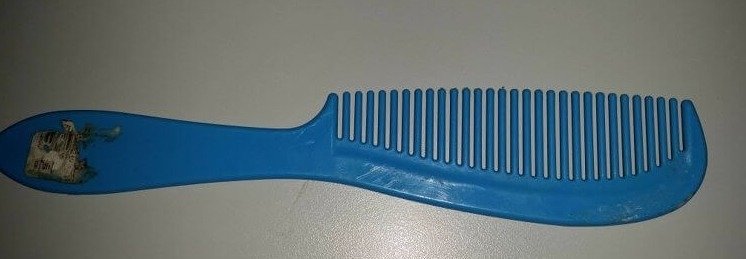
Bonus: the softer teeth of a wooden comb are gentler on your scalp and hair, which helps to reduce dandruff or itchy scalps.
Say No to Daily Washing
This hack is a confirmed, high-priority tip from hairstylists, and it's a big one: there is no need for daily hair washing! It is well known that shampoo, while cleaning our scalp, also totally strips hair of its' natural oils. This leaves our hair a lot less shiny, and if the hair is colore, expect those gorgeous shades to fade at double the speed when daily washing is involved.
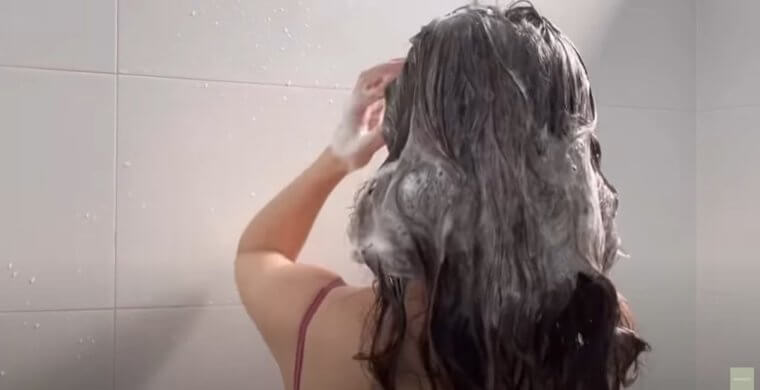
Logically, more hair washing also means more drying - usually involving hairdryers or flat irons, neither of which should be used at such a frequent rate on our hair.
DIY Deep Conditioners Are Cheap and Effective for Thicker Hair
No matter the type of hair, all hair strands need a deep condition from time to time, and it should definitely not be neglected! A really nourishing deep condition packs the hair with nutrients and repairs breakage or damage inflicted by styling products and heat. To deep condition, leave around 45 minutes free for the whole process. To DIY a deep conditioner at home, use natural ingredients such as shea butter and coconut oil mixed with essential oils such as rosemary and tea tree.
Regular deep conditioning will keep breakage and split ends at bay, which encourages healthy hair and growth!
Keep Iron Levels High
This hack is actually an important health tip! There is a clear link between an iron deficiency in the body and hair loss. Iron helps us produce hemoglobin, which carries oxygen for repairing our cells - cells that, among many other jobs, stimulate hair growth. Iron or ferritin deficiency is more common in women than men, but hair thinning or loss is rarely attributed to iron deficiency or what's going on inside our bodies. But it's important to remember that our body health contributes greatly to our hair health.
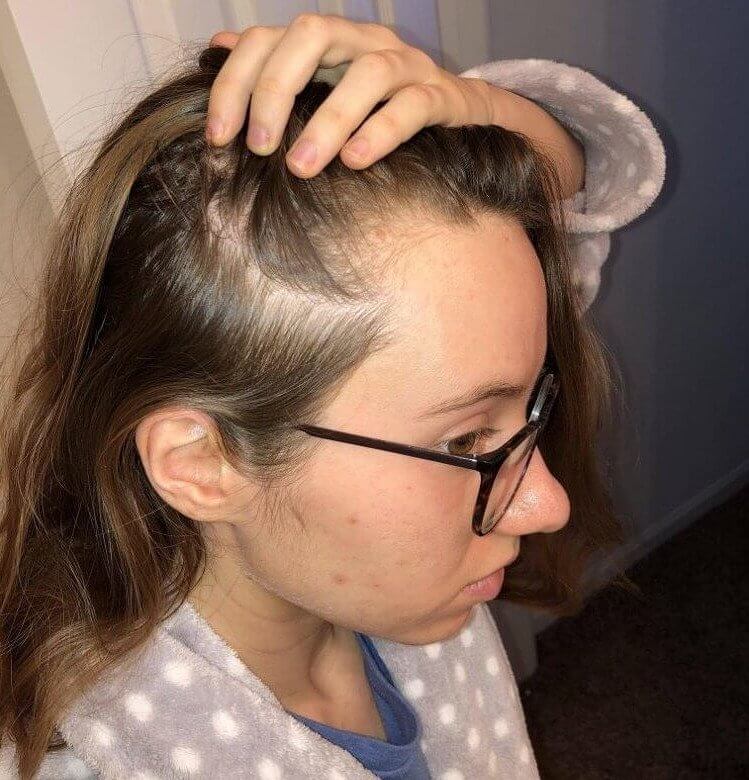
Adding vitamin C to a diet can help your hair growth journey along, as vitamin C allows our body to absorb iron more efficiently. Time to stock up on oranges and tomatoes!
Hydration Hydration Hydration
From root to tip, our hair is like a plant - it requires hydration! Drinking plenty of water is not only a healthy habit to incorporate into our lives; when it comes to hair, water specifically helps keep our scalp healthy, preventing itchiness and dry, brittle hair and shedding. Hydration has been proven to make stronger, bouncier, and shinier hair. Water encourages not only healthy hair but also hair growth!
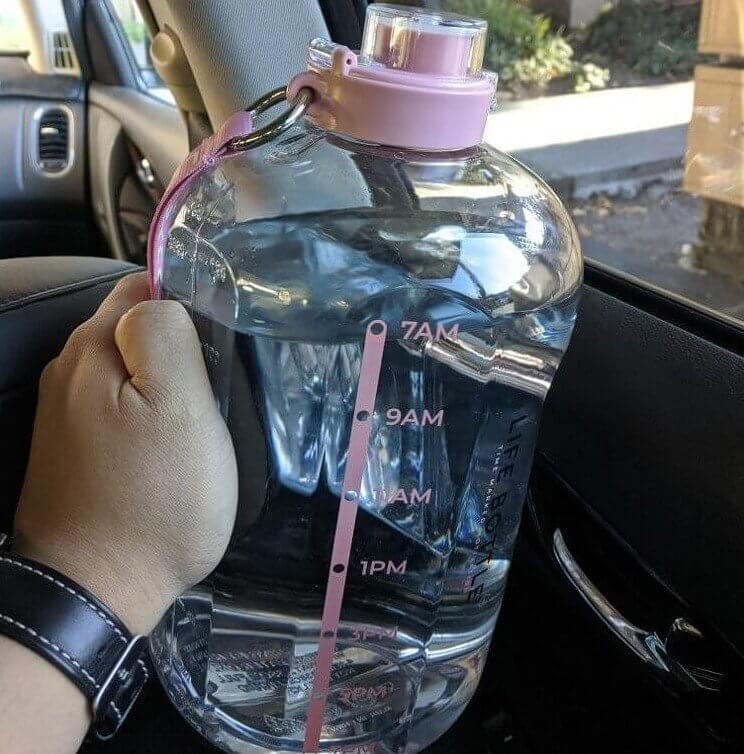
Similarly, as water gives our body energy to do all of the amazing things it does, dehydration will also slow down hair growth and lead to limp or dry hair.
Gently Brushing and Detangling Is Crucial (emphasis on the "gently")
While standing under the hot water is often stress-relieving, it seems that as soon as we're out of a relaxing bath or shower, the calm sometimes turns to stress and hurrying to get ready to leave the house. We've all been there - dragging a comb or brush through our wet locks, sometimes too forcefully, only to find we've pulled a bunch of hair out in our hurry, out of stress or annoyance. Brushing gently and detangling gently are key to preserving our hair and preventing future hair loss.
Pro tip: professional hairstylists strongly recommend detangling hair from the bottom upwards - instead of yanking at the roots and causing more breakage.
Protective Styling for Hair Growth
What are protective styles that encourage hair growth? Firstly, hair that is just left hanging and down is hair left open to the elements. Over time, women have learned that certain 'protective' styles can help tuck ends away and nurture hair in a way that wearing it down does not. For a person wearing their hair naturally, protective styling is a must in winter, for example. Buns, Bantu knots, cornrows, twists, and chignons are all considered protective styles.
But can these styles encourage hair growth? The answer may lie in 'low manipulation styles' that are looser, such as wigs, braids, and loose buns.
Avoid Bleaching
Bleaching agents are hard on our hair; that is just a fact. The chemicals in bleach penetrate the hair shaft, dissolving our hair's natural melanin - but it doesn't just affect the color of our hair. Bleach also interferes with the elasticity and porousness of our hair strands, leaving the hair weak and prone to breakage. If you do bleach and color hair, be kind to your head! Visit a salon professional who will apply just the right amount of bleach without causing too much damage or frying your hair.
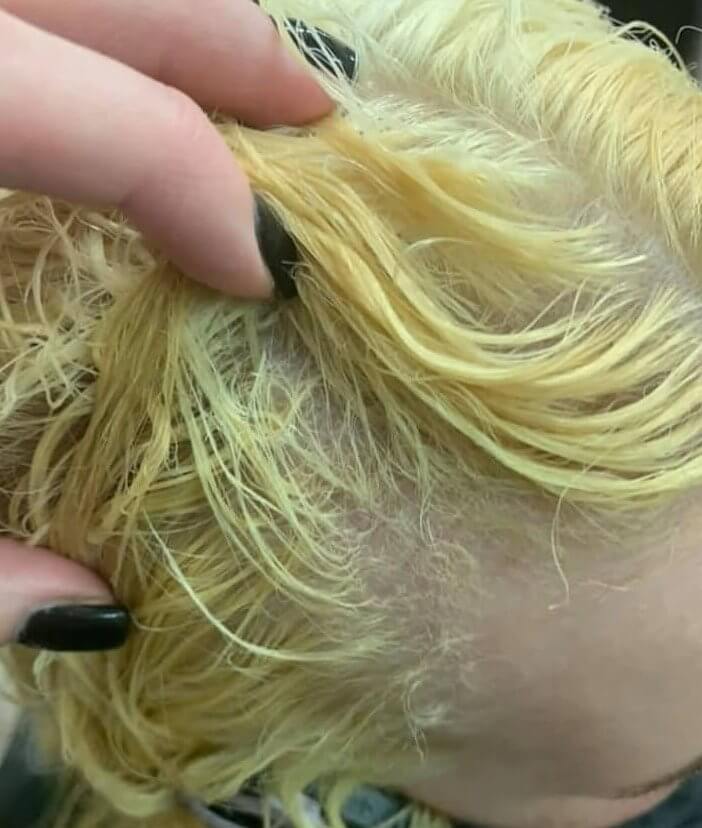
Additionally, invest in good haircare and repair - moisturizing shampoo and enriching hair masks will keep hair soft and hydrated.
Shaving off Edges Helps Faster Growth
Edges, or baby hairs, have a complex history when it comes to black and brown hair culture. Laying edges with gel or pomade and then styling in intrinsic designs goes as far back as the 1920s. However, edges were originally slick-backed to hide the naturally beautifully curl of black or brown hair, and conform to straighter, more European standards. In recent trends, haircare has returned to designing edges in creative ways - but Internet users have some sage advice when it comes to thinning edges that just cannot be styled.
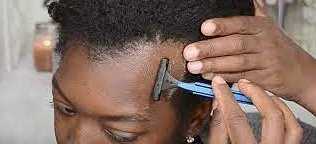
One recommended hack for thinning edges is to shave them off and start over - it might be time-consuming to do this, but users insist it will create a healthier environment for hair to grow back into.
Trimming for Healthy Natural Growth
It may sound completely counter-intuitive, but in order to keep growing hair, we have to cut it. Yes, exactly as it sounds! While we may think that every centimeter counts, in order to actually encourage our hair strands to keep growing stronger and longer, they need to be trimmed from time to time. Hair has a breaking point - that length that hair will grow to and then seemingly come to a standstill. It stops because the ends are splitting, but trimming those split ends will motivate your hair to keep.on.going.
Hairstylists recommend getting hair trimmed every four months to prevent breakage and to encourage growth - make those appointments today!
A Healthy, Balanced Diet
The world's greatest hack - taking care of our health! Every part of our diet affects our bodies in some way, and hair is no exception. What we eat can keep hair healthy and strong and can also play a part in hair loss prevention. Omega 3's, essential fatty acids, are necessary for keeping our locks luscious - it's those lipids again! - while vitamins B6 and B12 - it's the iron again! - are also really important vitamins for our hair health.
Doctors note that most people do not get enough protein in their diets, but protein can significantly contribute to healthier, stronger hair - it's time to make some changes to the supermarket list!
Conditioner for Life
If hair growth or length if the ultimate goal, there is one important haircare step in the pantheon of hair tips that should never, ever be skipped - conditioner! While there is no magical, overnight potion for growing hair, conditioner makes a significant difference to hair texture and health. It is the natural partner to shampoo, which strips and cleans our scalp and hair of build-up. Conditioner then jumps in, both strengthening and smoothing hair strands by adding moisture and nutrients.
Conditioner is basically acting as a protective coat - pay attention to ingredients in conditioner to find the right balance and scent for your hair.
Remove Stress From Your Life for Healthy Hair
Becoming less stressed can help your hair! In the study of mice, scientists have found direct links between stress hormones and hair loss or, more specifically, the 'resting' phase of hair growth that follicles move into when hair stops growing. Significant stress has been shown to 'push' hair follicles into the resting phase, leading to hair fall, while some believe one of the causes of severe alopecia to be high levels of stress.
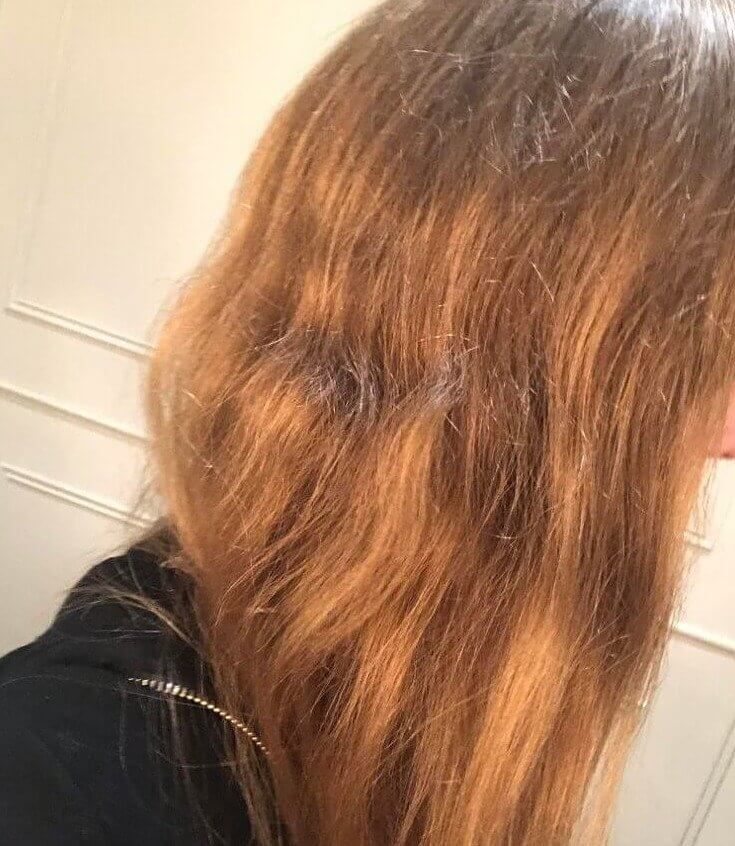
All is not lost if a person does experience hair loss from increased stress - the hair growth pattern can return, with follicles being encouraged out of the resting phase.
Shower Cap at Bedtime
When thinking about hair growth and preventing hair loss, shower caps are one of the cheapest and easiest hacks out there. Wearing a shower cap overnight for sleeping in produces a lot of natural heat on the end, which is excellent when it comes to hair growth. Shower caps are also an excellent tool when doing a deep condition, just pop it on and get on with the day. Shower caps have been proven to prevent breakage while sleeping, maintaining softer, stronger hair.
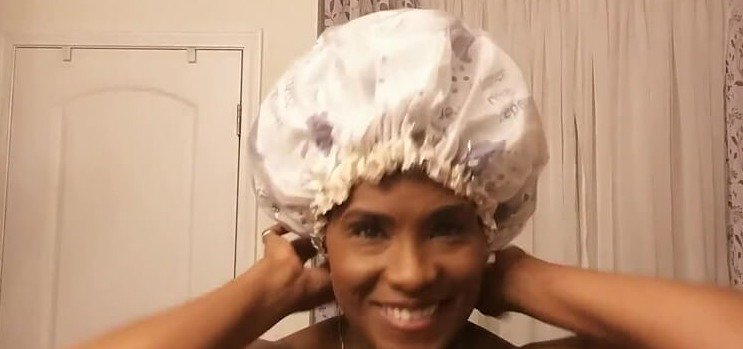
Not only that, but if a special hairstyle or styling needs to be kept in place and not ruined by sweating while sleeping, a cotton-lined shower cap will keep your hairstyle moisture and humidity-free overnight.

